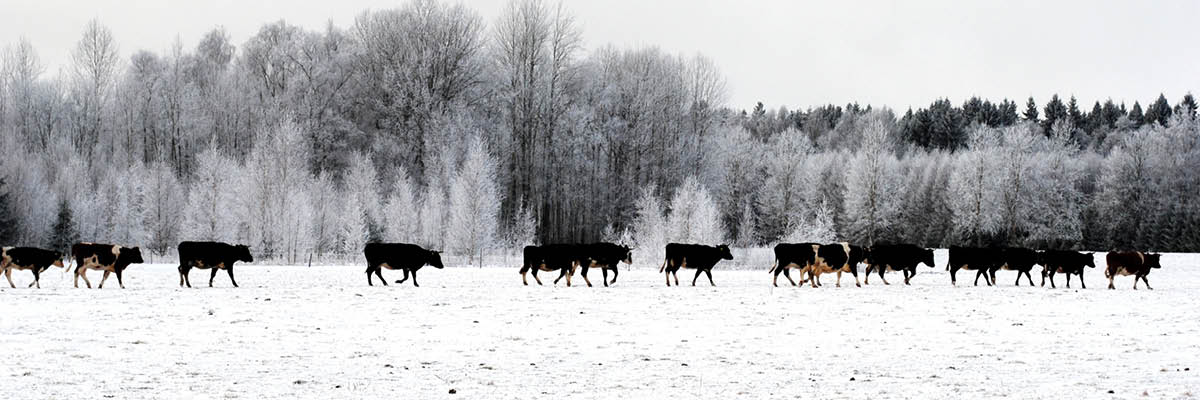If you subscribe to the predictions of the Farmers’ Almanac, we are going to have a colder than usual winter. The worst of this year’s bitter cold winter will affect the eastern part of the Rocky Mountains all the way to the Appalachians. So, will you be prepared to mitigate the cold upon your cattle?
Cattle are most comfortable within the thermoneutral zone when temperatures are neither too warm nor too cold. During the winter months cattle experience cold stress anytime the effective ambient temperature, which takes into account wind chill, humidity, etc., drops below the lower critical temperature. The lower critical temperature (LCT) is influenced by the animal’s condition – including thickness of hair and tissue insulation. Environment also plays a role and something to which you can contribute.
Research refers to LCT when describing the ability of cattle to withstand cold conditions. The LCT is the temperature at which maintenance requirements increase to the point where animal performance is negatively affected. Various sources put this temperature between 18-20 degrees F.
The table below lists the estimated lower critical temperatures of cattle in good body condition with different hair coats. In wet conditions cattle can begin experiencing cold stress at 59 degrees F, which would be a relatively mild winter day.
| Coat Description |
Critical Temperature |
| Summer Coat or Wet |
59°F |
| Fall Coat |
45°F |
| Winter Coat |
32°F |
| Heavy Winter Coat |
18°F |
Adapted from research by D.R. Ames, Kansas State University
While a new building won’t be ready for this winter, it’s time to think about it for next year. Stay tuned to the Farmers’ Almanac to see how cold the winter of 2021. Here are some management strategies to consider:
- A Summit Livestock Facilities monoslope facility can protect animals from the wind which increases cold stress on animals.
- Providing adequate dry bedding makes a significant difference in the ability of cattle to withstand cold stress.
- Keeping cows clean and dry greatly improves insulating properties and make cows less susceptible to cold stress.
- Providing additional hay and grain. If wet feeds are fed, they should not be frozen.
- Making sure that cows have ample water available at all times. Limiting water will limit feed intake and make it more difficult for cows to meet their energy requirements. Frozen troughs and excessively cold water seriously limit water intake.
Do you have more questions that are not covered in this article? If you need help designing and planning, please contact Summit Livestock Facilities at 800.213.0567 or click here to email us. If you are ready to get a price, click here to request a quote and a member of our customer engagement team will help you determine the next steps of your project.


